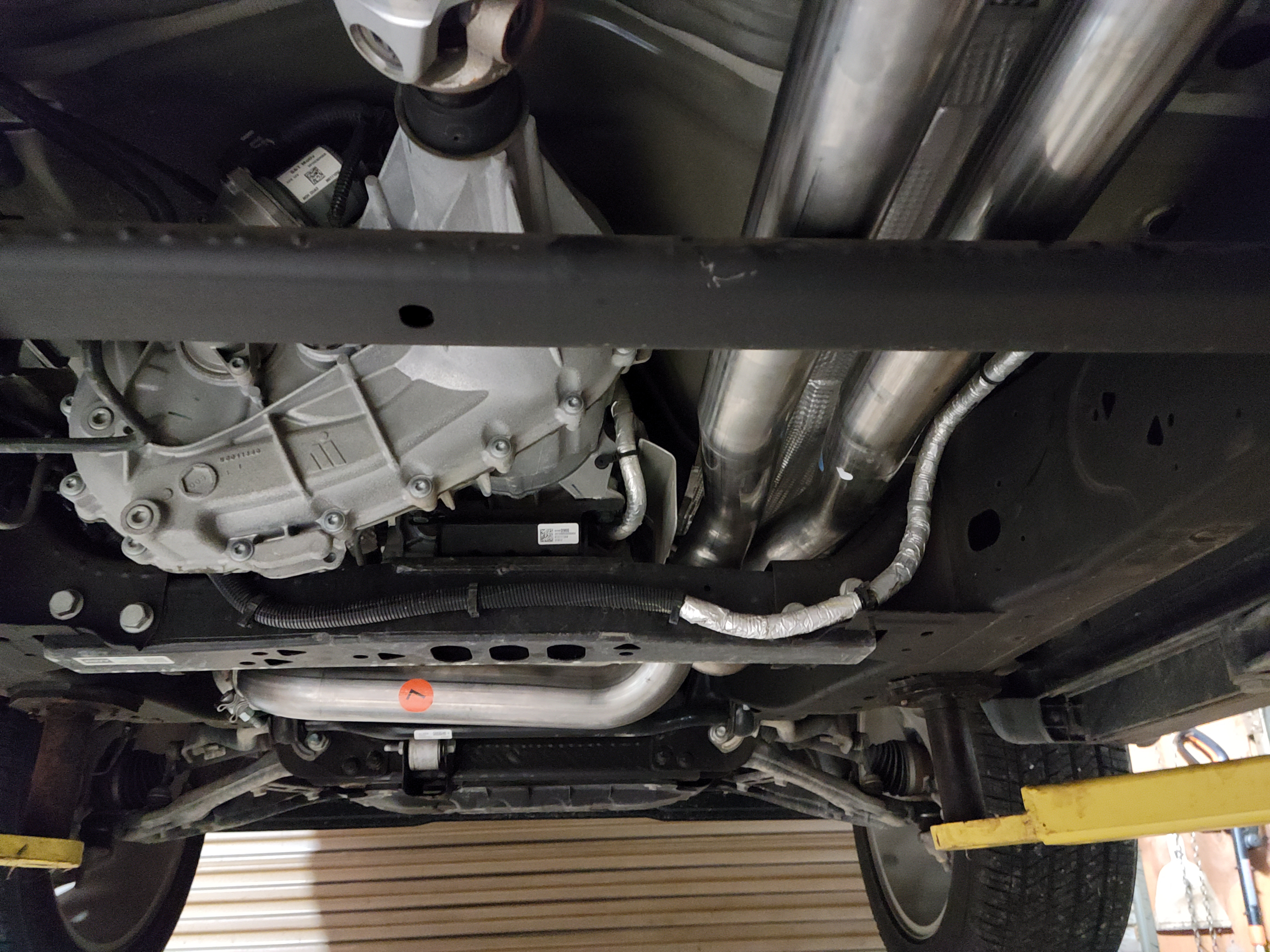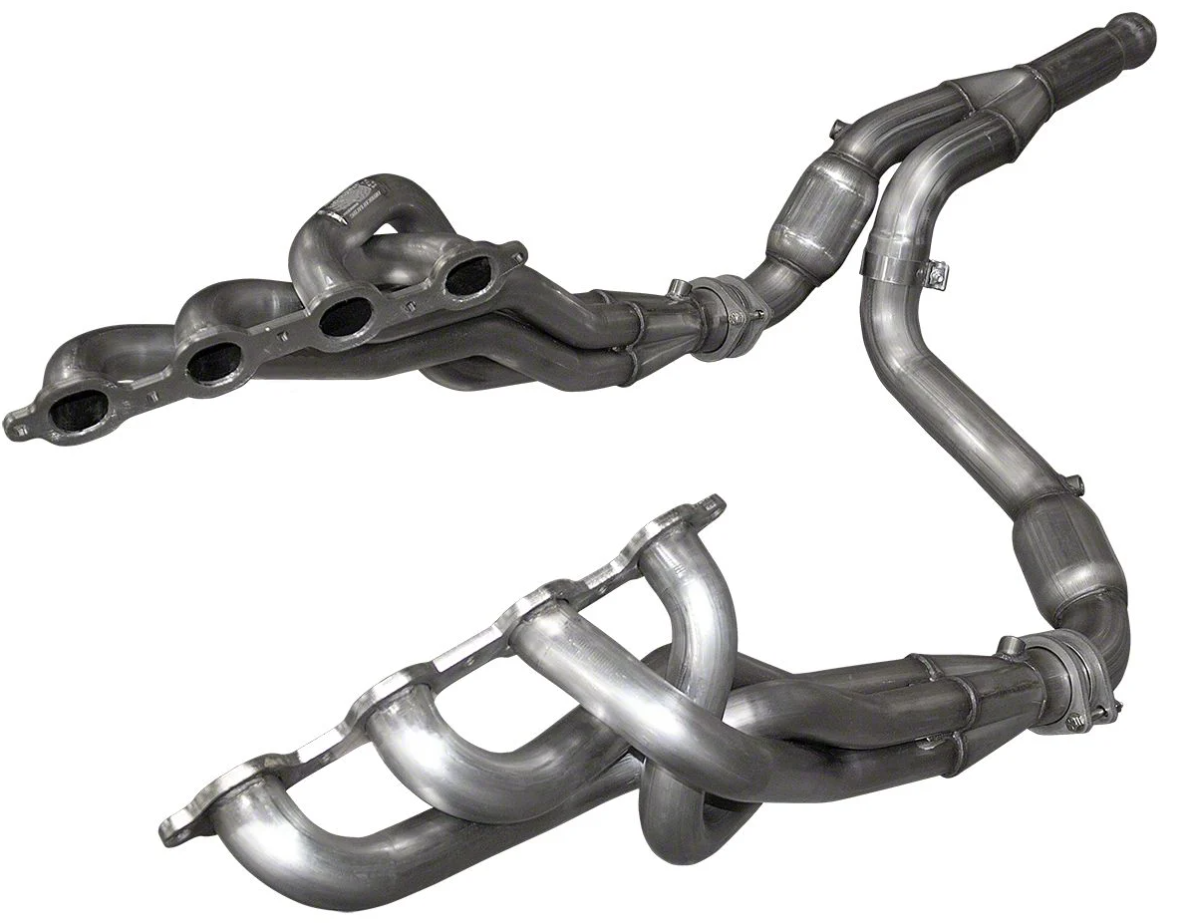Guaranteed 12/24 Delivery Still Available see item page for details! available on most items - Details
Long-Tube vs. Short-Tube Headers: The Long and Short of It

By Garrett Davis - March 5, 2020
Like just about any integral performance part of your engine, the exhaust system is often way over simplified and everyone and their uncle thinks they know all they need to about them — at least well enough to weld up the loudest exhaust possible, crack open a cheap beer, and call it job done. But have they really actually improved anything?
These oversimplifications come in two main forms from what I’ve noticed:
- “More exhaust flow the better! Throw some 6″ pipe on that sucker and call’er a day!”
- “No, exhausts need back pressure for torque!”
So what’s the answer? Well, neither. Kind of. It’s complicated!
Exhaust Headers 101:

The first, and most basic job of your exhaust manifold/headers is to funnel exhaust gases away from the engine bay to the rest of your exhaust system in order to vent those gases somewhere out of the way. While they’re doing that, their second job is to get this done in the most efficient way possible in terms power and fuel economy. There are packaging concerns as well, you have to fit all this piping somehow, but for the sake of this article we won’t worry about that.
Exhaust Headers VS Exhaust Manifold – What’s the difference?
Why is it that people usually refer to the stock equipment as an exhaust manifold and refer to the aftermarket parts as headers? Well technically speaking they are both manifolds, but the basic distinction between them is in how they are constructed. An exhaust manifold is generally a single large piece of cast iron with the separate tunnels for each cylinder’s exhaust gases to flow through before combining into one larger pipe at the collector.
Meanwhile exhaust headers are typically made from individual tubes for each cylinder that are bent to shape and welded into place, also combining down into a single pipe, flowing out into the catalytic converter (typically) and then the rest of the exhaust system.
Pros and Cons of Headers Over Manifolds:
Pros:
- The smooth walls of the header piping is better for flow than the rough walled castings of the headers.
- Manufacturers have more freedom of pipe length and routing with more compact headers (more on that later).
- Headers are generally lighter weight for the same size.
Cons:
- The thick walls of cast iron exhaust manifolds insulate heat away from the rest of the engine bay better than thin walled, steel headers (generally).
- Headers are often more expensive to manufacture.
So you can see from the above why it makes more sense for most manufacturers to generally equip their engines with cast iron manifolds over headers — especially in applications where there isn’t as much of a need for maximizing performance. Manifolds flow well enough, keep under-hood temps down, and are cheaper to make on average. It’s usually only once you get to more performance oriented applications that you’ll start to see headers on a vehicle from the factory.
Now that we got all that out of the way, let’s get to the question that landed you here:
Long Tube VS Shorty Headers – Which is Better?
Well… that depends.
First of all, if you’re running a turbocharged car, long tube headers aren’t usually feasible or practical, so these cars will usually have shorty headers that feed right into the hot-side inlet of the turbo. Otherwise, long-tube headers are generally considered to be the best for reducing back pressure as much as possible, and therefore the best for scavenging — this is despite the fact that they actually technically flow less than shorty headers generally do, but after the section above, we have a good understanding of why that is.
Another advantage with long-tube headers is that they not only give solid peak power numbers, but help to raise horsepower and torque in the low and mid-range of the RPM band, giving you more useable power down where you usually need it. This makes for a more fun drive day to day, as you’re rarely able to enjoy wide-open throttle out to redline out on the street.
The disadvantage comes in the form of packaging. Some cars are worse than others, but it can be difficult to route that big cluster of tubes out of the way of motor mounts, the firewall, the transmission, and still have ground clearance for them afterwards.
Meanwhile, not only do short-tube headers make packaging easier, they also are generally designed to bolt right up with your stock exhaust, allowing you to easily bolt in a set of headers without having to worry about custom fabrication, or having to move stock emissions equipment like your catalytic converter(s), which can get legally messy in some states.
What Is Scavenging, and How Do Equal Length Headers Help?
Basically, scavenging can be thought of as the opposite of backpressure. With efficient exhaust flow, the outgoing gases will create a vacuum behind the pulse. As the valves are opening between cylinder strokes, there is a sweet spot where the intake and exhaust valves are at least partially open at the same time. During this brief moment, that vacuum will actively pull in fresh air through the intake valves resulting in an effect not dissimilar to what you would get from mild forced induction.
More air in the cylinder means more power, and more power means more smiles. Who doesn’t like smiles?
Two things happen once you exhaust valves open; first is a high pressure shock wave caused by the rapid expansion of hot exhaust gasses as they exit the valve, traveling at the roughly the speed of sound (about 767 miles an hour). Following behind that is the actual burst of exhaust gases, which will ideally be unimpeded in exiting the headers through the collector into the rest of the exhaust system.
Once this shockwave reaches the end of the pipe and equalizes to atmospheric pressure, a low pressure wave is sent back up the tube to the cylinders to pull that air through the cylinder.
Where equal length headers come into play to help here, is by ensuring that each the tube from the cylinder head to the collector is the same length, those exhaust pulses have the same distance to travel to get there. That way, there is always a clear path for the exiting exhaust to free up as much back pressure as possible for the next pulse coming back down that line, ensuring as close to ideal conditions for scavenging as possible.
This is where the main advantage of headers come from, and why there is usually such a large performance benefit in installing them. Another thing to note is that a bigger header tube isn’t necessarily better. The process of scavenging relies on the vacuum created in that pipe, and too large a diameter would limit that effect. This is why engines actually make more power with headers on than if they just vented straight to atmosphere directly from the cylinder head.
Have any other questions on how your exhaust system or other systems on your car work?
Need help figuring out which direction to take your build? Shoot me an email or drop a comment below!